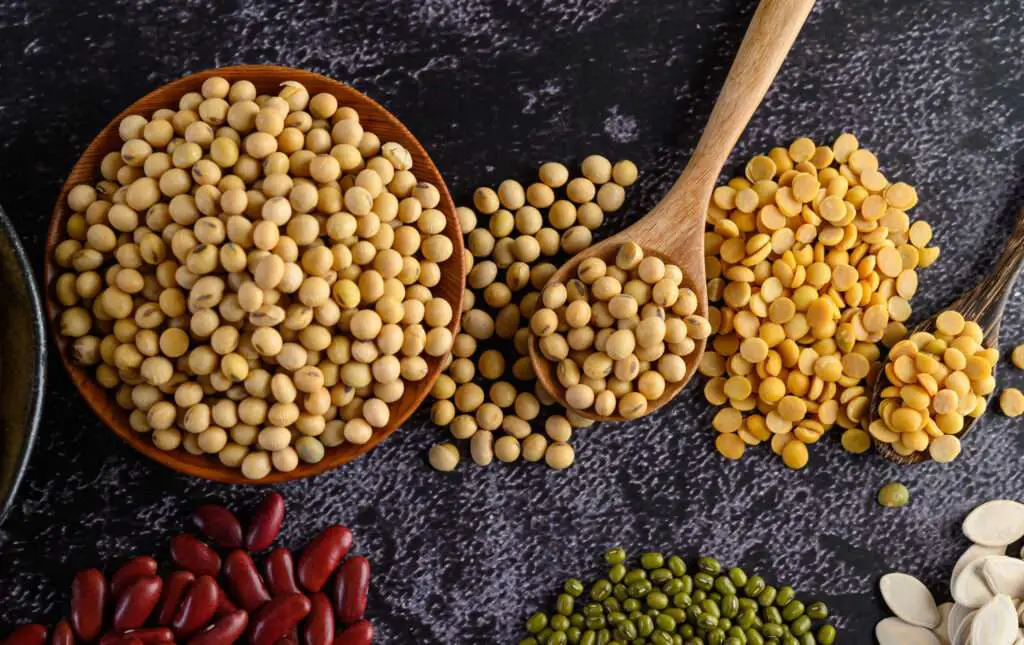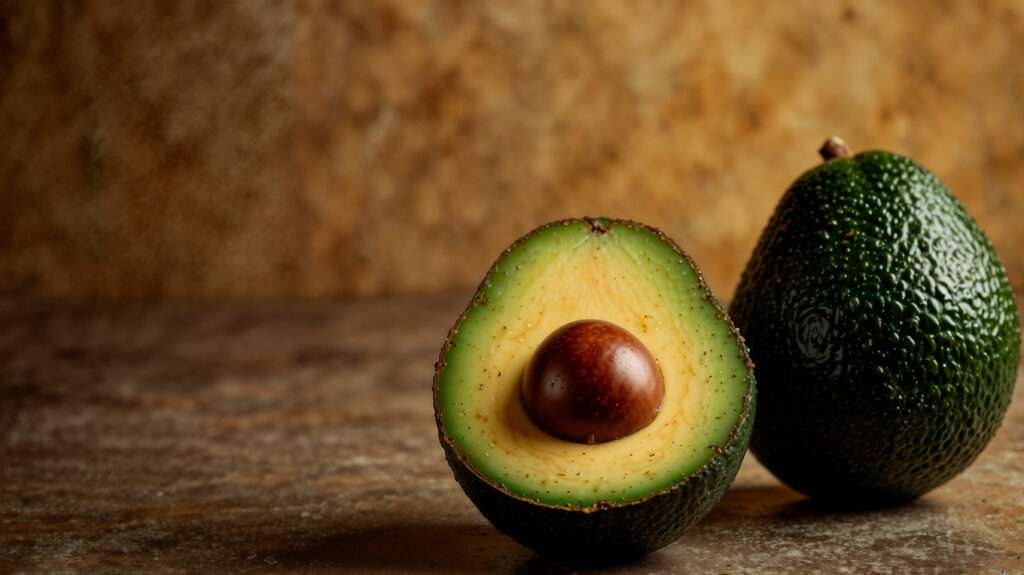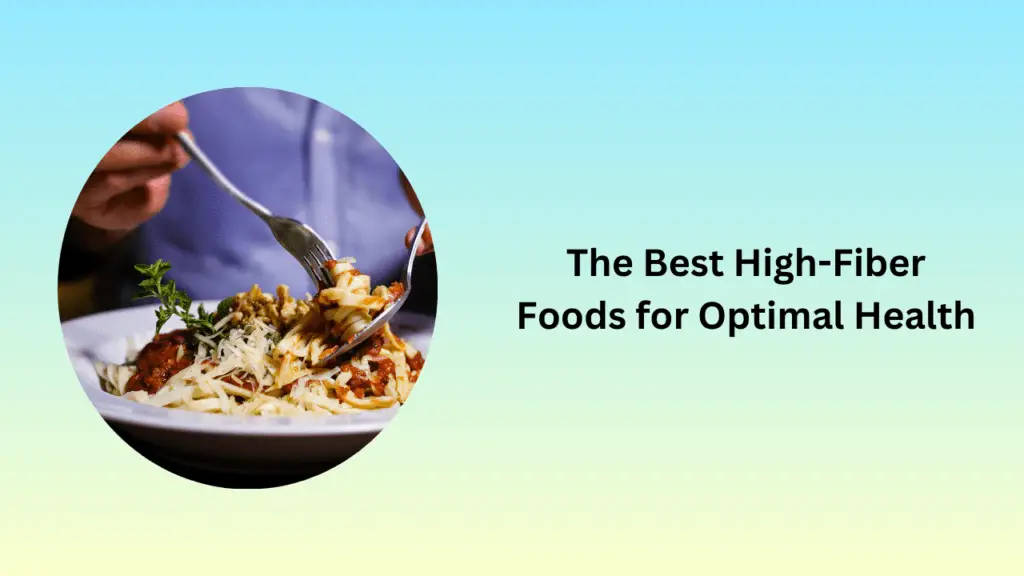High-fiber foods are key to maintaining good health, aiding digestion, and supporting heart health. Including fiber-rich options like fruits, vegetables, whole grains, and legumes in your diet can improve cholesterol levels, regulate blood sugar, and promote overall well-being. Discover the top high-fiber foods that can help you achieve optimal health.
Table of Contents
ToggleWhat is Fiber and Why is it Important?
The Two Types of Fiber
- Soluble Fiber: Once it is dissolved in water, it creates a gel-like substance in your body. It aids in lowering cholesterol and managing blood sugar levels. Oats, beans, and fruits like apples and citrus are all foods that contain soluble fiber.
- Insoluble Fiber: This type does not dissolve in water. It helps move food through the digestive tract and adds bulk to your stool, promoting regular bowel movements. Whole grains, nuts, and vegetables like carrots and leafy greens are great sources.
- Key Benefit: Diets rich in fiber can help maintain a healthy weight, improve heart health, and reduce the risk of certain diseases.
High-Fiber Foods to Include in Your Diet

Incorporating a variety of high-fiber foods into your meals can help ensure you meet your daily fiber needs, which is about 25 grams for women and 38 grams for men according to the Institute of Medicine.
1. Legumes: The Unsung Heroes
Legumes are incredibly high in fiber and also packed with protein, making them a great choice for both vegetarians and meat-eaters.
Examples:
- Lentils: Just one cup of cooked lentils contains approximately 15.6 grams of fiber.
- Black Beans: About 15 grams of fiber are contained in a cup of these hearty beans.
- Chickpeas: Also known as garbanzo beans, a cup provides around 12.5 grams.
Tip: Add legumes to soups, and salads, or even make a delicious hummus for snacking!
2. Whole Grains: More than Just Bread
Your fiber intake can be significantly increased by switching from refined grains to whole grains.
Popular Whole Grains:
- Oats: A breakfast staple with about 4 grams of fiber per cup (cooked).
- Quinoa: Not only high in fiber (5 grams per cup), it’s also a complete source of protein.
- Barley: When cooked, this grain has a fiber content of around 6 grams per cup.
Pro Tip: Opt for whole-grain versions of bread, pasta, and cereal for maximum health benefits.
3. Fruits: Nature’s Sweet Treats

Fruits are not only delicious but also an excellent source of dietary fiber, especially when consumed with their skins.
High-Fiber Fruits:
- Avocado: This creamy fruit provides about 10 grams of fiber per cup.
- Raspberries: With approximately 8 grams of fiber per cup, they are a nutrient powerhouse.
- Pears: A medium pear has around 5.5 grams, plus it’s juicy and satisfying!
Quick Idea: Top your oatmeal with berries or include sliced avocado in salads for an extra fiber boost.
4. Vegetables: The Colorful Fiber Providers
Veggies are nutrient-dense and can significantly enhance your fiber intake.
Fiber-Rich Vegetables:
- Broccoli: Contains about 5 grams of fiber per cup, steamed.
- Brussels Sprouts: These small sprouts pack about 4 grams of fiber each when cooked.
- Carrots: Either raw or cooked, they provide approximately 5 grams of fiber per cup.
Fun Fact: Eating a wide variety of colorful vegetables can help ensure you get different types of dietary fiber along with essential vitamins and minerals.
5. Nuts and Seeds: Tiny, Nutrient-Dense Packages
When it comes to snacks, nuts, and seeds provide healthy fiber along with healthy fats.
High-Fiber Options:
- Chia Seeds: Just a small tablespoon offers about 5 grams of fiber.
- Almonds: A 1-ounce serving provides around 3.5 grams.
- Flaxseeds: Ground flax has around 2.8 grams of fiber per tablespoon.
Snacking Tip: Sprinkle seeds on yogurt or a salad for an added crunch and fiber boost.
How to Increase Your Fiber Intake Slowly

If you’re new to fiber or looking to increase your intake, it’s important to do so gradually. This helps prevent digestive discomfort.
- Start with Breakfast: Switch to oatmeal or a high-fiber cereal.
- Snack Smartly: Choose fruits, veggies, or nuts instead of processed snacks.
- Incorporate Legumes: Add beans to soups, stews, or salads.
- Choose Whole Grains: Make the switch from white to whole grain products.
Reminder: Drink plenty of water as you increase fiber intake to help digestion.
Conclusion
Incorporating high-fiber foods into your diet is a simple yet effective way to improve overall health. From legumes and whole grains to fruits and vegetables, the options are plentiful and diverse. Experiment with different food combinations to keep your meals exciting and nutritious.
Are you ready to enhance your diet with these high-fiber foods? Share your favorite fiber-rich recipes or tips in the comments below, and let’s embark on this health journey together!
By prioritizing fiber in your diet, you will not only meet your nutritional needs but also enjoy a variety of delicious foods! Get started today and observe the difference in your health and well-being.
Additional Resources
Harvard Health: Dietary Fiber>>>
Mayo Clinic: Fiber>>>
Feel free to explore these sources to deepen your understanding of fiber and its benefits!
